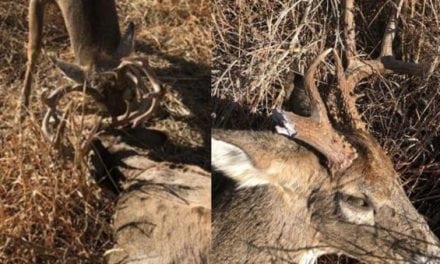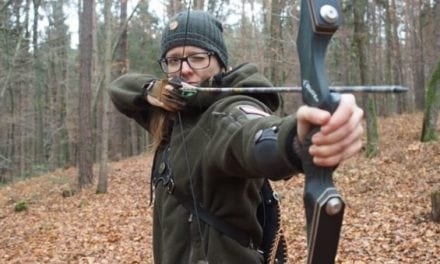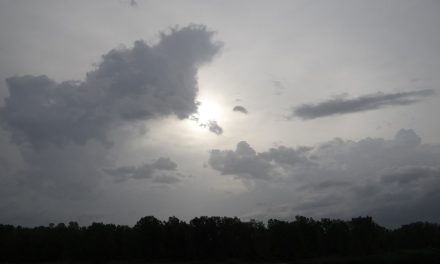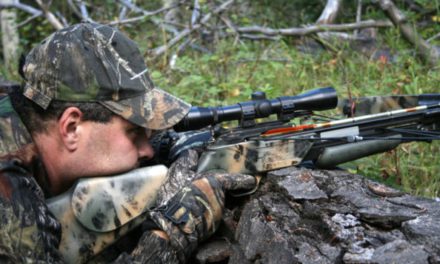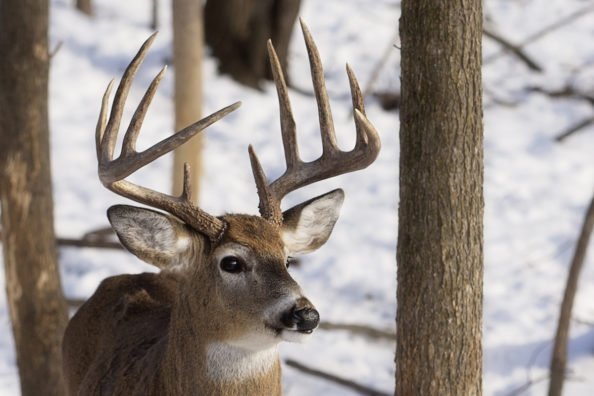
Here is all you need to know about Wisconsin deer hunting.
Ask any deer hunter to name a whitetail hotspot in the Midwestern United States and odds are Wisconsin will be mentioned. For good reason too, the Badger state has produced some of the most legendary bucks of all time. The state is home to the legendary James Jordan buck, and the controversial Johnny King buck among others.
Many hunters travel to Wisconsin every deer hunting season in hopes of bagging their own trophy buck. Today we will go over the basics of Wisconsin deer hunting with an overview on their deer seasons, how to obtain a license and more.
Make this the season you stop dreaming about hunting for the legendary bucks of Wisconsin and the year you make it a reality. There is a reason Wisconsin leads the way for all-time Boone & Crockett trophy entries.
Wisconsin Deer Season Dates
For a Midwestern state, Wisconsin has plenty of solid opportunities for resident and non-residents alike to bag that buck of a lifetime starting in mid-September and continuing until January every year. For 2021-2022, the dates are as follows.
- Archery Season (Includes crossbow use): September 18 – January 9, 2022
- Archery and crossbow (metro units): September 12-January 31, 2022
- Youth Hunt: October 9-10
- Disabled Hunt: (Special program not available statewide): October 2-10
- Firearms Season: November 20-28
- Muzzleloader Season: November 29-December 8
- Statewide Antlerless: December 9-12
- Farmland Zone Holiday Hunt: December 24-January 1, 2022
Note that some seasons change dates every season. For instance, the firearms season has a traditional start date of the Saturday before Thanksgiving. In some seasons, like last year, this has led to poorer deer harvests because the season started much later in the month, missing the prime of the rut. The Wisconsin Department of Natural Resources has toyed with the idea of moving this start before, but that idea was widely rejected by Wisconsin hunters during surveys in 2020.
Licensing and bag limits
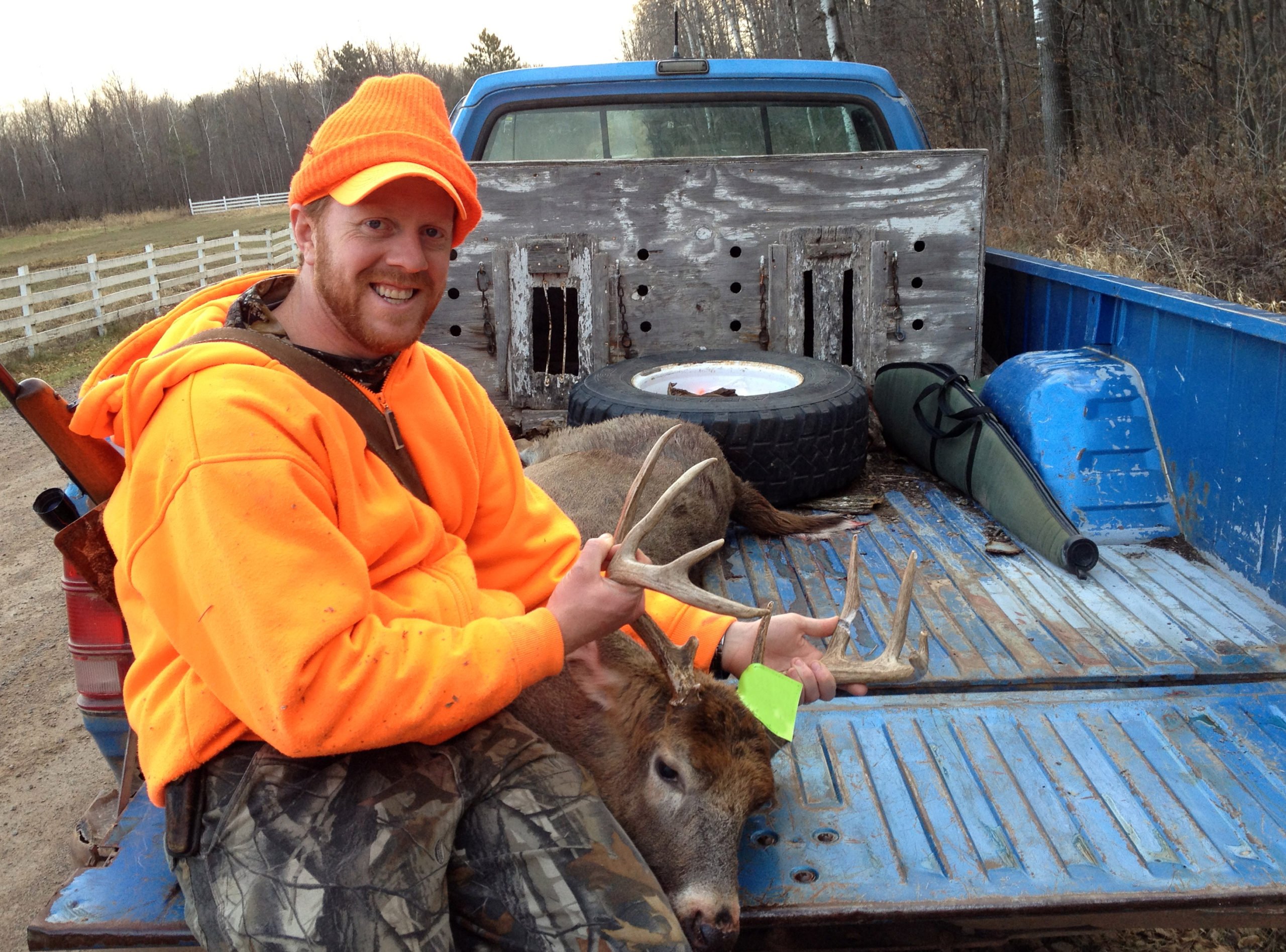
Just like neighboring Michigan, one great thing about Wisconsin is the low cost of deer licenses, especially for non-resident hunters. It is a much more affordable out-of-state deer hunt than many other big buck states. If you were born on or after January 1, 1973, be aware that you must have either a hunter education certificate from Wisconsin or proof of completion of a course recognized by another state.
You are allowed one antlered deer per “deer harvest authorization” according to Wisconsin’s regulations. Basically that means you can take a buck with firearm and another with bow. Wisconsin keeps tags weapons specific, so hunters are not allowed to use a bow tag on a buck via firearms and vice versa. Check the regulations book for additional special restrictions that may be in place in some areas. Wisconsin is a bit unique in that they do allow group/party hunting, but only during the gun deer season. To quote the Wisconsin regulations book:
“It is illegal to kill game for another person except during a firearm deer season when a member of a group deer hunting party may kill a deer for another member of the party. However, junior
antlerless deer harvest authorizations issued to those age 17 and under may only be filled by the person to whom the authorizations are issued.”
So, you can harvest a deer using another person’s tag during the firearms season only. The hunting regulations specifically state you cannot do this during the archery or crossbow seasons. Also keep in mind that if you decide to take advantage of this during the gun deer hunt, both persons must be hunting together in order to be legal. No buying a deer hunting license for a spouse, child or relative who is not even going to hit the woods.
The bag limits on antlerless deer vary depending on what deer management zone you are hunting. Some areas are going to dole out more chances at antlerless deer than others. For 2020, at least three northern counties, Forest, Marinette and Oconto are buck-only counties with no antlerless harvests permitted. License fees in Wisconsin are as follows.
- Junior Crossbow – Resident: $20, Non-Resident: $77
- Junior Gun deer license – Resident: $20, Non-Resident: $36
- Mentored Gun Deer, Archer or Crossbow: $7
- Archery License – Resident: $24, Non-Resident: $160
- Crossbow License – Resident: $24, Non-Resident: $160
- Gun Deer License – Resident: $24, Non-Resident: $160
- Bonus Antlerless Harvest Authorization – Resident $12, Non-Resident: $30
As you can see, those fees are not bad for non-residents. The mentored license is an absolute steal at $7. To make things even better, the Wisconsin DNR does offer some additional fee reductions for specific circumstances. For instance, they offer reduced license fees for Wisconsin residents who successfully recruit first time hunters and anglers. Wisconsin also offers reduced hunting license fees for anyone who has not hunted for 10 years or more and younger hunters 11 years old and younger. License sales can be done in person, or online.
One last thing to note about licensing is mandatory deer harvest registration. Wisconsin requires that all deer harvests be registered either online, in person at a check station, or via phone within 24 hours. The DNR also recommends all deer harvests in the sate get tested for CWD, which we will dive into more next.
Chronic Wasting Disease
We hate having to address this, but it has become a necessity for anyone hunting in Wisconsin. Sadly, this always-fatal disease has had a huge negative effect on the herd and has led to a bevy of regulation changes across the state over the years.
CWD is a highly infectious neurological disorder that is sometimes mistakenly referred to as a “zombie” disease. Mostly because infected animals often suffer extreme weight loss, and a loss of their fear of humans. Some may show no signs of infection at all until they are found dead and tested. This scary disorder is caused by prions that can survive for extended periods in the animal’s brain and spinal column. They can also leech into the soil, potentially infecting another animal if it happens to graze at the same spot. The prion can also spread through close physical contact. That is why select counties have strict deer baiting bans. Officials do not want anything that unnaturally encourages deer to congregate closely nose-to-nose.
CWD has also caused the DNR to create strict carcass transport regulations to prevent carrying the disease to other states and counties that are otherwise unaffected by the disease. All meat must be deboned, cut, and wrapped prior to transport out of a CWD-affected area. If you are planning to mount a big buck harvest, you must have the skull plate or skull cleaned of all brain tissue prior to moving out of a CWD management zone. If you are a non-resident hunter, it is important to pay close attention to these regulations. Other states have set up check operations and have confiscated deer from hunters who did not follow the rules. A little common sense will help you avoid problems like this.
The DNR also heavily encourages hunters to have their deer tested for CWD, even if it was not taken in a CWD zone. It is probably better to be safe than sorry, and you will be helping wildlife officials further their understanding of this problem and how it spreads.
Where the big boys are found
Wisconsin is the state to go if you are looking for a buck of record proportions. We already mentioned the James Jordan buck, the one-time world record that scored a whopping 206 1/8 inches. The perfect 10-pointer was harvested in Burnett County back in 1914. The state has long been the place for world-class typicals. The Johnny King buck, which threatened, Milo Hanson’s world record typical, came from the western part of the state, in Grant County.
The King buck was eventually removed from record contention due to technicalities, but plenty of other bucks have flirted with that magical 200-inch mark in Wisconsin. The second-largest typical ever taken according to the Wisconsin Buck and Bear Club was a 197 6/8-inch beast taken south of Milwaukee, in Kenosha County in 1999. Wood, Monroe and Vilas counties round out the five largest typical harvests for the state. The southern part of the state has produced some real beasts. Last year, a shed hunter found a dead non-typical grossing over 250 inches in Rock County. That buck died after getting locked up with another buck, a giant typical that grossed over 170 inches.
We should give special mention to the western part of the state as a consideration for your hunting trip too. The areas immediately adjacent to the Mississippi River make for prime whitetail habitat. Notable here are counties like Vernon and Buffalo. The latter county produced the monstrous Elmer Gotz buck, a 253-inch non-typical in 1973. Because the state’s deer population has produced so many Booners, it is a destination spot. Finding a hunting guide is usually not too hard, although we recommend doing your research and booking your northwoods adventure far in advance. Wisconsin is also loaded with public land opportunities for hunters looking for a greater challenge, especially during gun season.
Overall, Wisconsin is a deer hunter’s destination spot that every hunter should consider for a bucket list trip at least once in their careers. Good luck to all the hunters heading to the Badger state this season!
Products featured on Wide Open Spaces are independently selected by our editors. However, when you buy something through our links, we may earn a commission.
For more outdoor content from Travis Smola, be sure to follow him on Twitter and check out his Geocaching and Outdoors with Travis YouTube channels.
NEXT: THE AXIS DEER AND HOW THEY’RE IMPACTING PARTS OF THE UNITED STATES
WATCH
The post Wisconsin Deer Hunting: Everything Hunters Need to Know appeared first on Wide Open Spaces.












